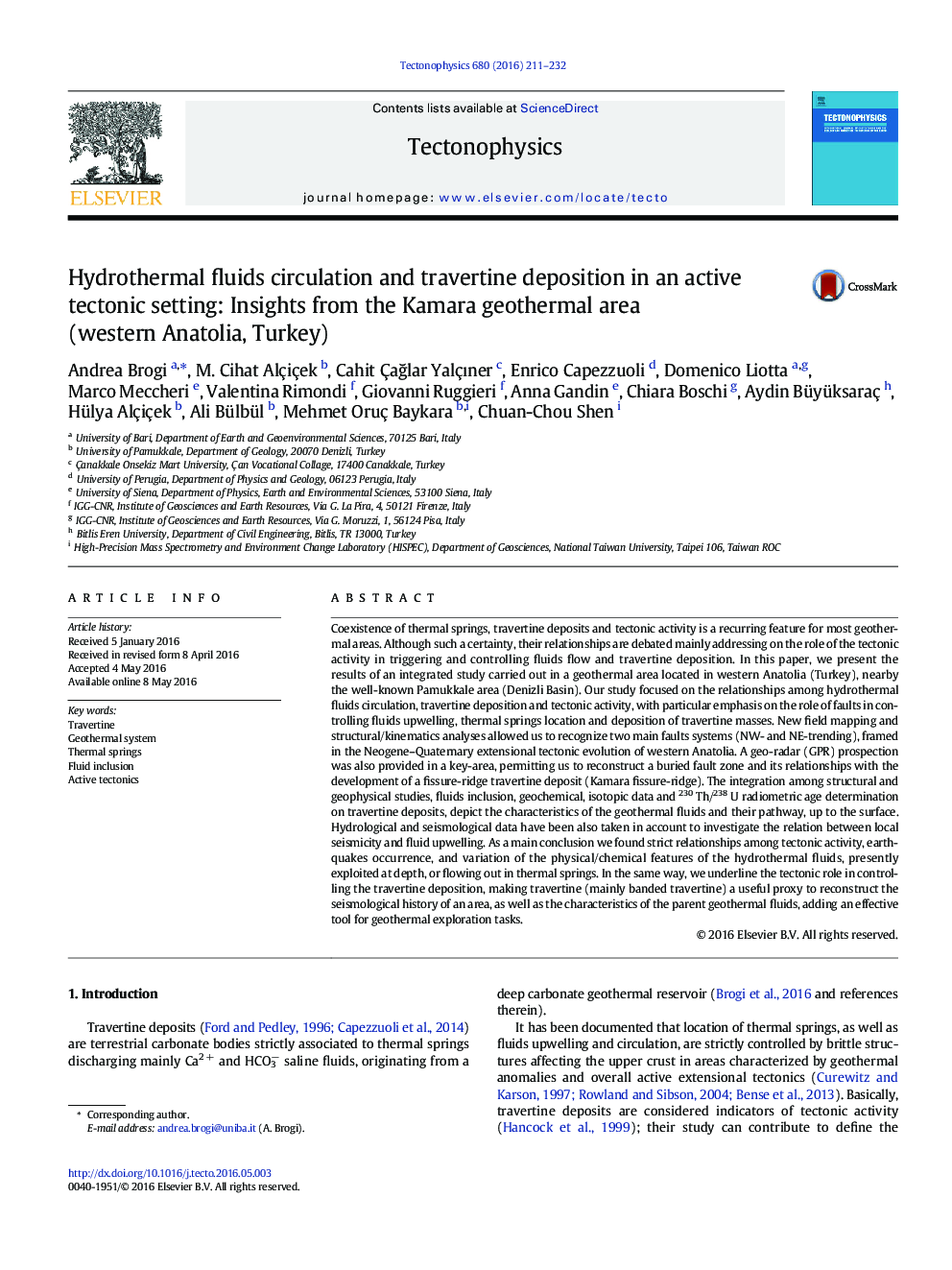| کد مقاله | کد نشریه | سال انتشار | مقاله انگلیسی | نسخه تمام متن |
|---|---|---|---|---|
| 6433359 | 1636718 | 2016 | 22 صفحه PDF | دانلود رایگان |
- Tectonic control on thermal spring location and travertine deposition;
- Impact of seismic events in controlling the permeability in rock masses;
- Concomitant perturbation of chemical/physical properties of hydrothermal fluids during periods of intense seismic activity;
- Long-living (500Â Ka, at least) low-temperature geothermal system
- Faulting strictly controls development and progressive growth of travertine fissure-ridges.
Coexistence of thermal springs, travertine deposits and tectonic activity is a recurring feature for most geothermal areas. Although such a certainty, their relationships are debated mainly addressing on the role of the tectonic activity in triggering and controlling fluids flow and travertine deposition. In this paper, we present the results of an integrated study carried out in a geothermal area located in western Anatolia (Turkey), nearby the well-known Pamukkale area (Denizli Basin). Our study focused on the relationships among hydrothermal fluids circulation, travertine deposition and tectonic activity, with particular emphasis on the role of faults in controlling fluids upwelling, thermal springs location and deposition of travertine masses. New field mapping and structural/kinematics analyses allowed us to recognize two main faults systems (NW- and NE-trending), framed in the Neogene-Quaternary extensional tectonic evolution of western Anatolia. A geo-radar (GPR) prospection was also provided in a key-area, permitting us to reconstruct a buried fault zone and its relationships with the development of a fissure-ridge travertine deposit (Kamara fissure-ridge). The integration among structural and geophysical studies, fluids inclusion, geochemical, isotopic data and 230Â Th/238Â U radiometric age determination on travertine deposits, depict the characteristics of the geothermal fluids and their pathway, up to the surface. Hydrological and seismological data have been also taken in account to investigate the relation between local seismicity and fluid upwelling. As a main conclusion we found strict relationships among tectonic activity, earthquakes occurrence, and variation of the physical/chemical features of the hydrothermal fluids, presently exploited at depth, or flowing out in thermal springs. In the same way, we underline the tectonic role in controlling the travertine deposition, making travertine (mainly banded travertine) a useful proxy to reconstruct the seismological history of an area, as well as the characteristics of the parent geothermal fluids, adding an effective tool for geothermal exploration tasks.
Journal: Tectonophysics - Volume 680, 12 June 2016, Pages 211-232
